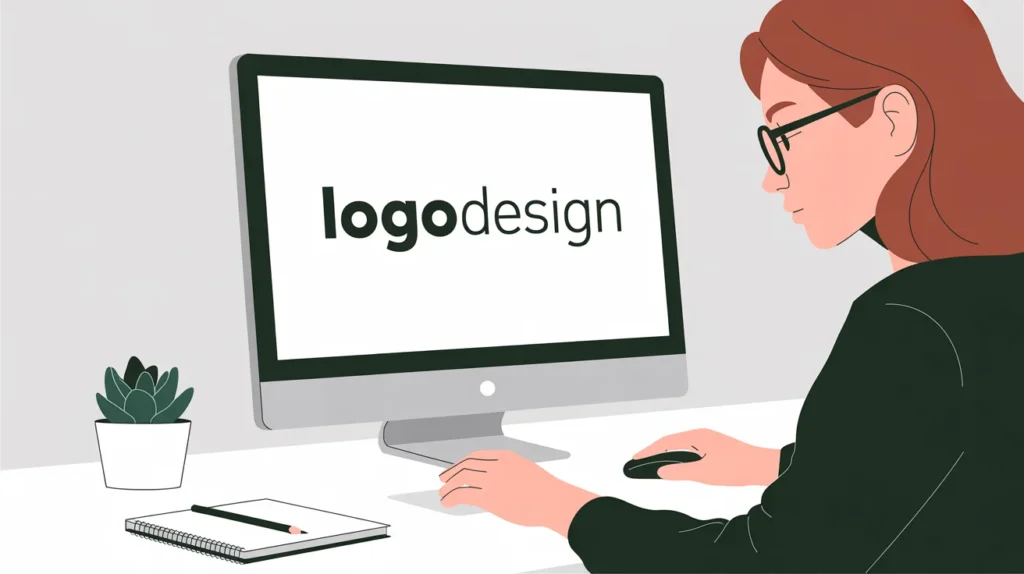A logo is more than just a graphic — it’s the visual cornerstone of a brand. Whether it appears on a website, business card, or billboard, your logo communicates who you are and what you stand for. A great logo should be simple, memorable, and flexible enough to work in any medium or size for Logo design guide.
This comprehensive guide explains every aspect of the logo design process — from concept to completion — including professional tools, techniques, and tips that help create a truly distinctive and lasting design.
How is a logo created step by step?
The process of creating a logo is both creative and strategic. Designers follow a structured workflow to ensure every logo is meaningful, original, and functional.
Step-by-step logo design process:
- Discovery and Research
- Understand the brand’s goals, values, and audience.
- Analyze competitors to identify gaps and opportunities.
- Gather inspiration and moodboards to define direction.
- Concept Development
- Brainstorm ideas through sketches and mind maps.
- Experiment with different shapes, symbols, and typography.
- Focus on conveying a single clear message.
- Digital Drafting
- Move the strongest concepts into design software.
- Simplify and refine the visuals to improve balance and readability.
- Test multiple variations (shapes, colors, fonts).
- Feedback and Refinement
- Gather opinions from clients, stakeholders, or focus groups.
- Make adjustments based on clarity, scalability, and impact.
- Remove unnecessary elements that clutter the design.
- Finalization and Delivery
- Prepare the logo in multiple formats (AI, EPS, SVG, PNG, JPG).
- Provide brand guidelines for consistent use across platforms.
Discover ideas that perfectly complement your interests—see the related post now.
What software do professionals use for logo design?
Professional designers rely on vector-based tools because vectors allow infinite scaling without losing quality.
Popular logo design software:
- Adobe Illustrator – Industry-standard tool for vector design, offering precision and control.
- Affinity Designer – Affordable one-time purchase with a professional-grade toolkit.
- CorelDRAW – Common in print-based industries for its advanced vector features.
- Figma – Great for collaborative and digital-first teams.
- Inkscape – Free, open-source software ideal for beginners or budget-conscious designers.
Why vectors matter:
Vector files (AI, SVG, EPS) can be resized for any platform — from app icons to billboards — without distortion. This makes them the foundation for all professional logos.
How to design a logo from scratch
Designing a logo from scratch starts with an idea — not the computer. Creativity grows from understanding the brand first.
Key steps to design from scratch:
- Research deeply – Know the company’s mission, audience, and tone.
- Sketch freely – Create dozens of quick sketches to explore visual directions.
- Simplify early – Focus on shapes that are recognizable and scalable.
- Work in black and white – Ensure the logo works even without color.
- Digitize carefully – Build clean, balanced shapes in vector software.
- Test across mockups – Apply it to digital and print formats to check versatility.
A logo designed from scratch should feel original and aligned with the brand’s identity — not a template or imitation.
How to make a logo look professional
Professional logos are polished, balanced, and consistent. They communicate credibility through precision.
Tips for a professional finish:
- Use grids and alignment tools to ensure symmetry and proportion.
- Maintain consistent stroke widths and spacing.
- Test legibility at various sizes.
- Choose professional typography — avoid overly decorative fonts.
- Provide clear usage guidelines (color codes, spacing, do’s and don’ts).
- Deliver all necessary file formats for web, print, and merchandise.
A professional-looking logo isn’t just about beauty; it’s about reliability and functionality across every medium.
How to make a minimalist logo design
Minimalism focuses on clarity and simplicity. It strips away the unnecessary and highlights the essence of the brand.
Characteristics of minimalist logos:
- Few shapes, clean lines, and strong contrast.
- Limited color palette (one or two core colors).
- Simple, geometric forms for instant recognition.
- Smart use of negative space to create hidden meaning.
Tips for creating minimalist logos:
- Start with the brand’s core message.
- Remove anything that doesn’t support that message.
- Balance white space for harmony.
- Focus on timelessness rather than trends.
Minimal logos are often the most versatile — think of brands like Apple, Nike, or FedEx. Their strength lies in simplicity.
What is the role of negative space in logo design?
Negative space (the empty area around or within a logo) is a powerful storytelling tool. It helps form subtle shapes or hidden meanings that engage viewers.
Why negative space matters:
- Adds depth without clutter.
- Creates hidden symbolism or visual surprises.
- Improves balance and readability.
- Makes the logo more memorable.
Example: The arrow hidden between the “E” and “x” in the FedEx logo represents speed and precision — a brilliant use of negative space.
To use it effectively, plan for both the filled and empty areas when sketching. The empty space should feel intentional, not accidental.
Affordable Logo Design Packages
Professional logo design doesn’t have to break the bank. Many businesses and freelancers now offer affordable logo design packages that deliver high quality within reasonable budgets.
Typical package options include:
1. Basic Package
o 1–2 initial logo concepts
o One round of revisions
o Final delivery in basic file formats (PNG, JPG)
2. Standard Package
o 3–5 unique logo concepts
o Multiple revision rounds
o Delivery in all file types (AI, EPS, SVG, PNG, JPG)
o Brand color palette and typography suggestions
3. Premium Package
o 5+ professional logo concepts
o Unlimited revisions until approval
o Complete brand identity guide
o Social media kit and print-ready versions
Affordable packages allow startups, small businesses, and entrepreneurs to access professional-grade logos without excessive cost. The key is to choose a designer or agency that values creativity, originality, and transparency over mass-produced templates.
How to design a logo that scales well for all platforms
A logo must look sharp whether it’s on a pen or a billboard. Scalability ensures consistent quality across devices and media.
How to achieve scalability:
- Design in vector format (AI, SVG, EPS).
- Avoid fine details that disappear at small sizes.
- Test readability at multiple scales.
- Create responsive logo versions:
- Full logo (for print or desktop)
- Simplified icon (for mobile apps or social media)
- Monogram or emblem (for small merchandise)
Pro tip: Always test your logo on various screen types and print samples to confirm clarity and contrast at all scales.
How to ensure your logo design is unique
A unique logo helps a brand stand out and avoid legal issues.
Ways to make your logo truly distinct:
- Avoid clichés (like generic swooshes or lightbulbs).
- Draw inspiration from the brand’s story, not trends.
- Experiment with custom typography and original icons.
- Check existing logos in your industry before finalizing.
- Conduct a trademark search to ensure legal safety.
When you design something that feels authentic and fits the brand’s purpose, uniqueness follows naturally.
How to design a logo that works in both color and black & white
A great logo remains strong even without color. Color should enhance the logo — not define it.
Best practices for color flexibility:
- Begin the design in black and white.
- Add color only after confirming the shape works well.
- Choose contrasting color combinations for visibility.
- Create variations:
- Full-color version
- Grayscale version
- Solid black or white version
This ensures your logo stays effective on light and dark backgrounds, in print or digital, and even when color printing isn’t possible.
What are vector and raster logos?
Understanding file formats is essential for professional logo delivery.
Vector Logos:
- Made of mathematical paths and shapes.
- Scalable to any size without losing quality.
- Ideal for print, signage, and digital media.
- Common formats: AI, EPS, PDF, SVG.
Raster Logos:
- Made of pixels (dots of color).
- Lose quality when scaled up.
- Best for web previews, social media, and small digital use.
- Common formats: PNG, JPG, GIF.
Rule of thumb: Always design the master logo in vector form, then export raster versions as needed. This ensures the highest quality for every application.
Final Thoughts
Creating a logo is an art and a science. It requires creativity, precision, and understanding of both design principles and brand psychology.
A truly professional logo:
- Represents the brand’s story clearly.
- Works flawlessly across colors, sizes, and formats.
- Remains timeless and easily recognizable.
By following a structured process — from research and sketching to refinement and delivery — you can create a logo that not only looks beautiful but also builds a lasting visual identity for years to come.
Dive deeper into content that matters—explore more and discover the difference.






